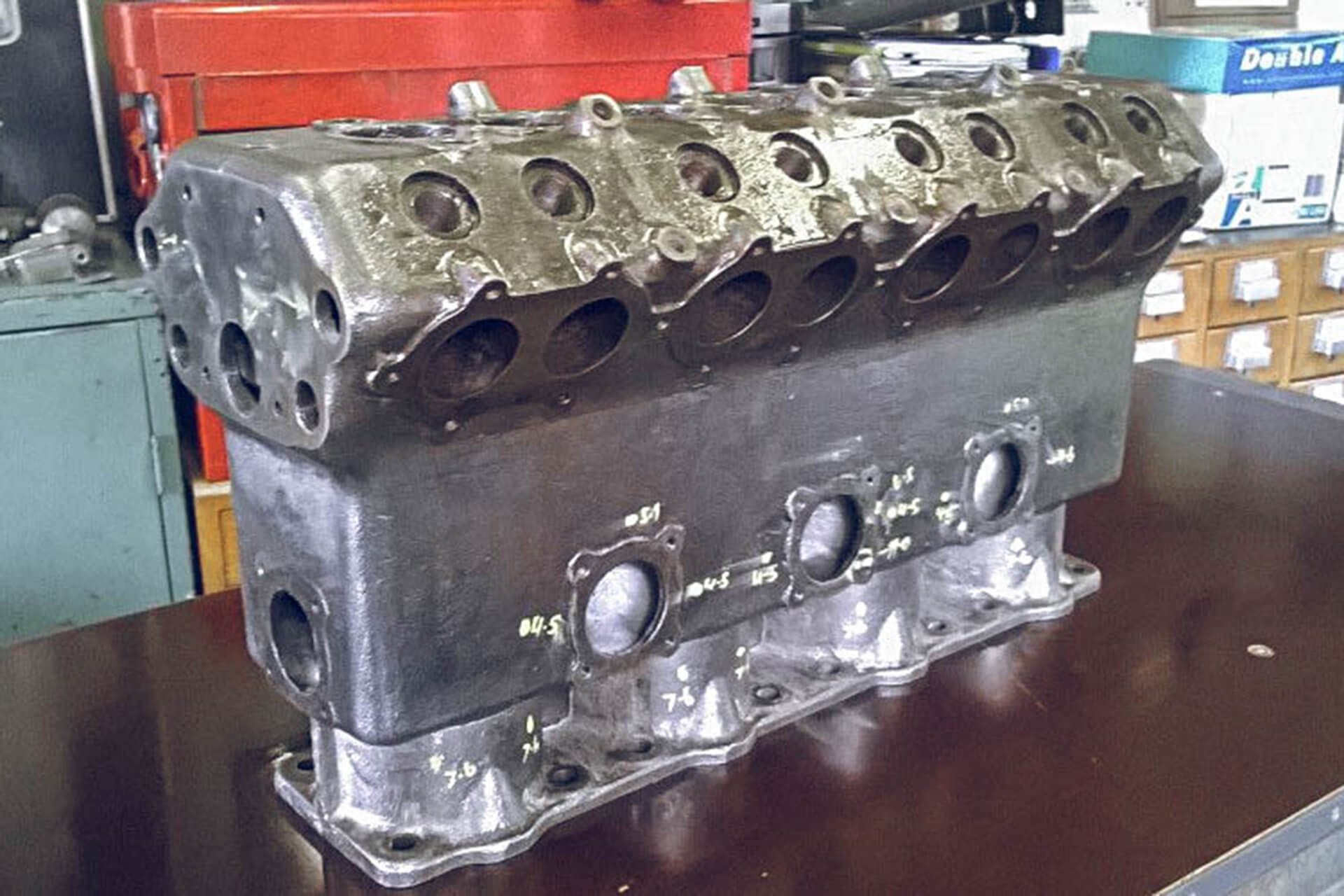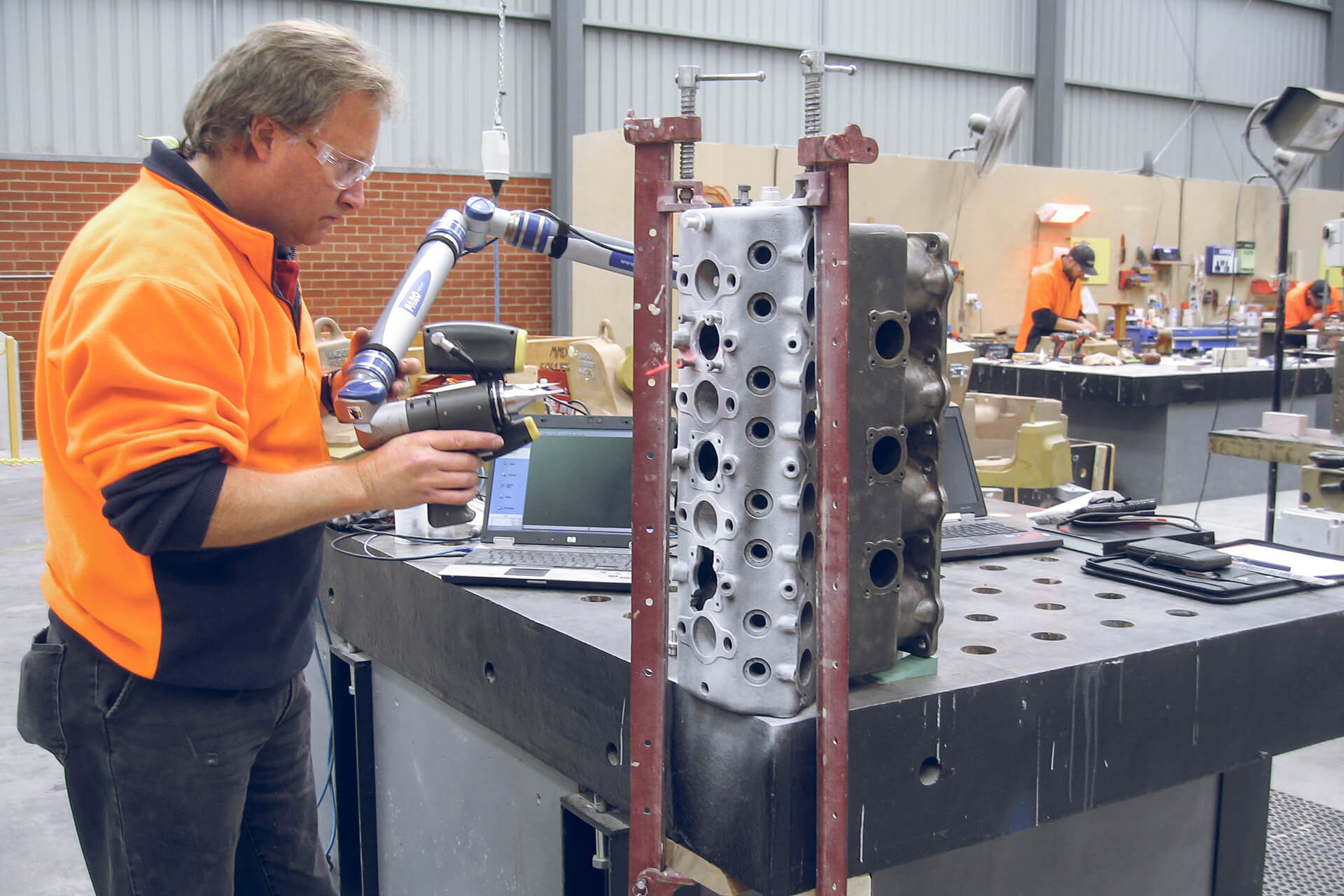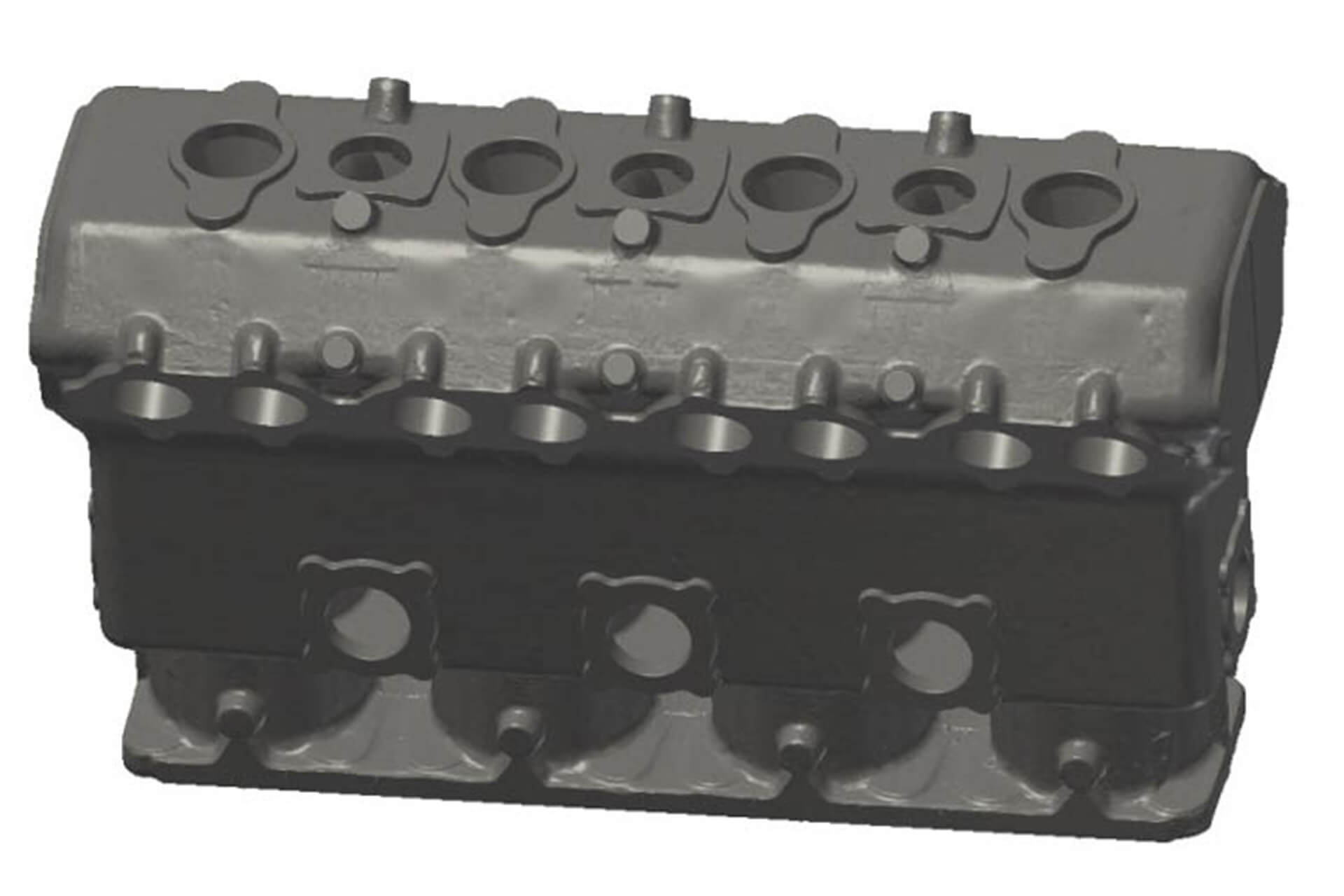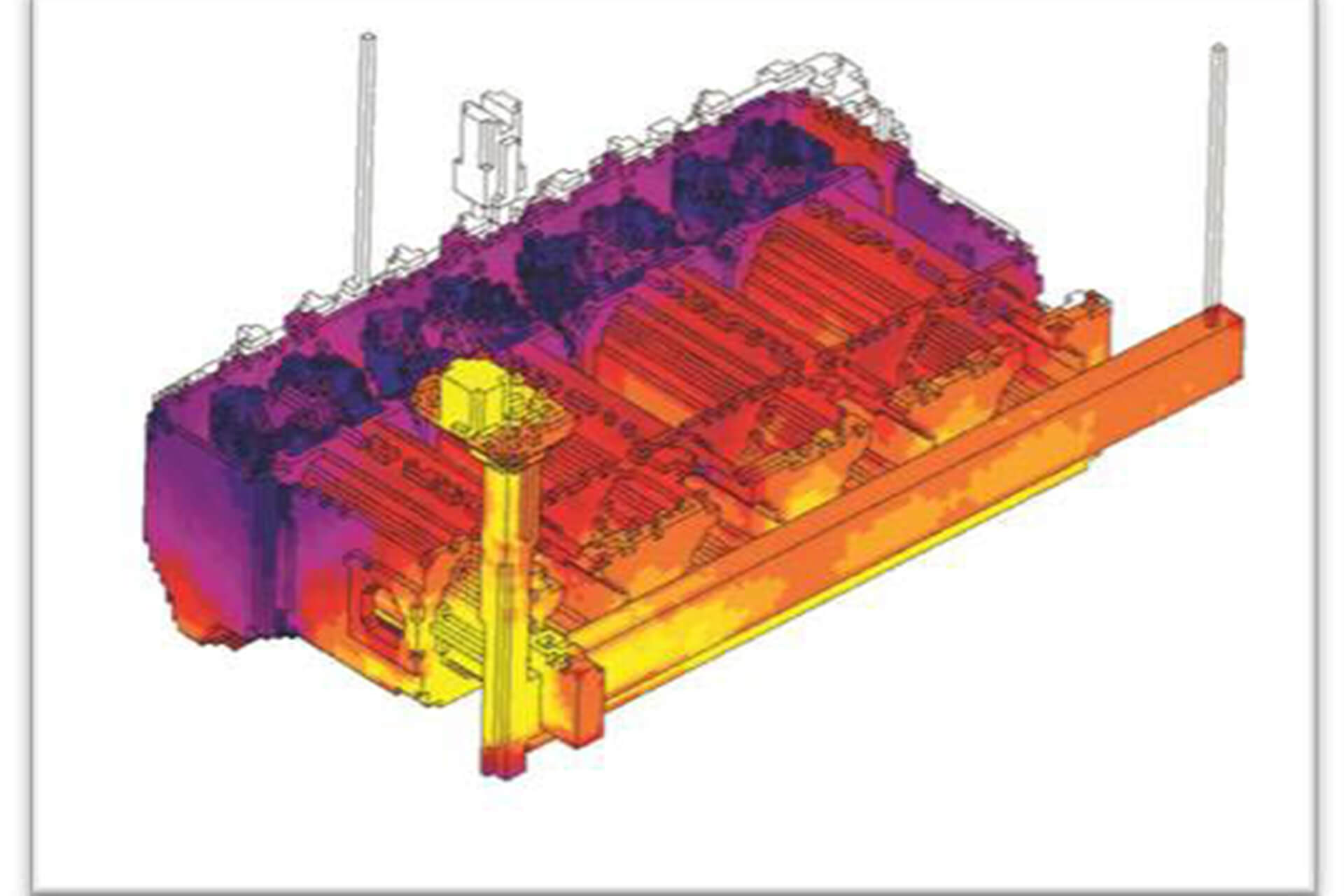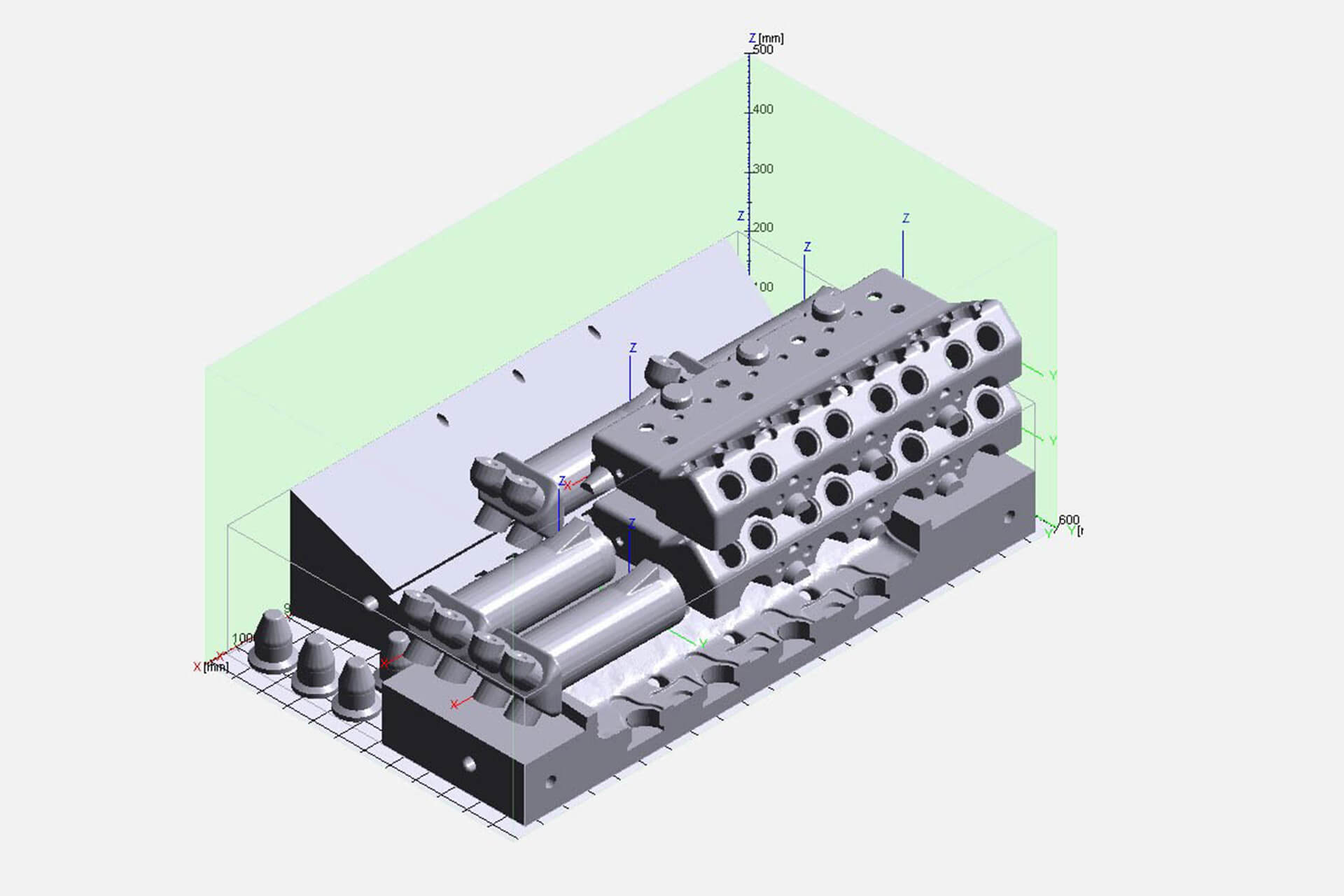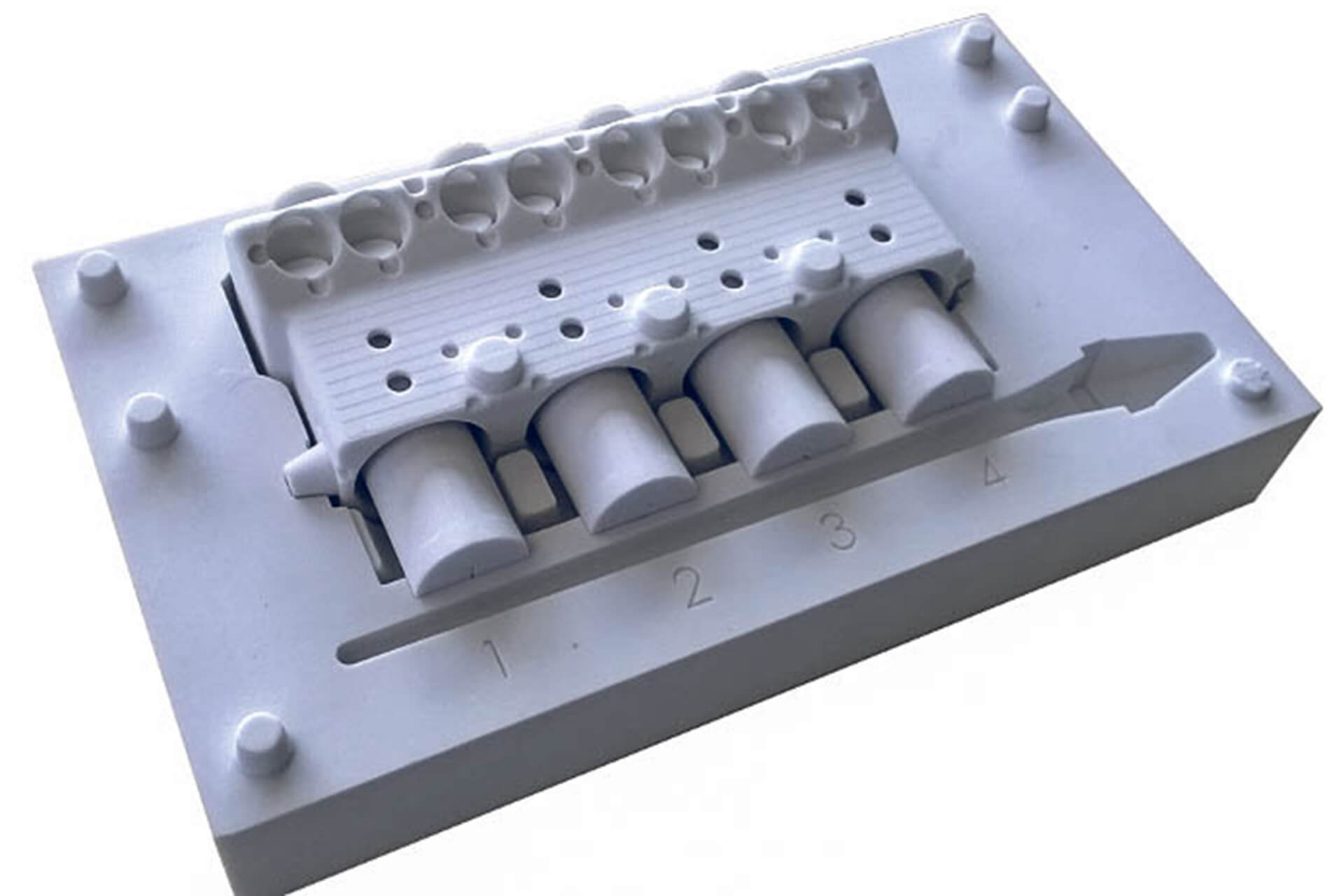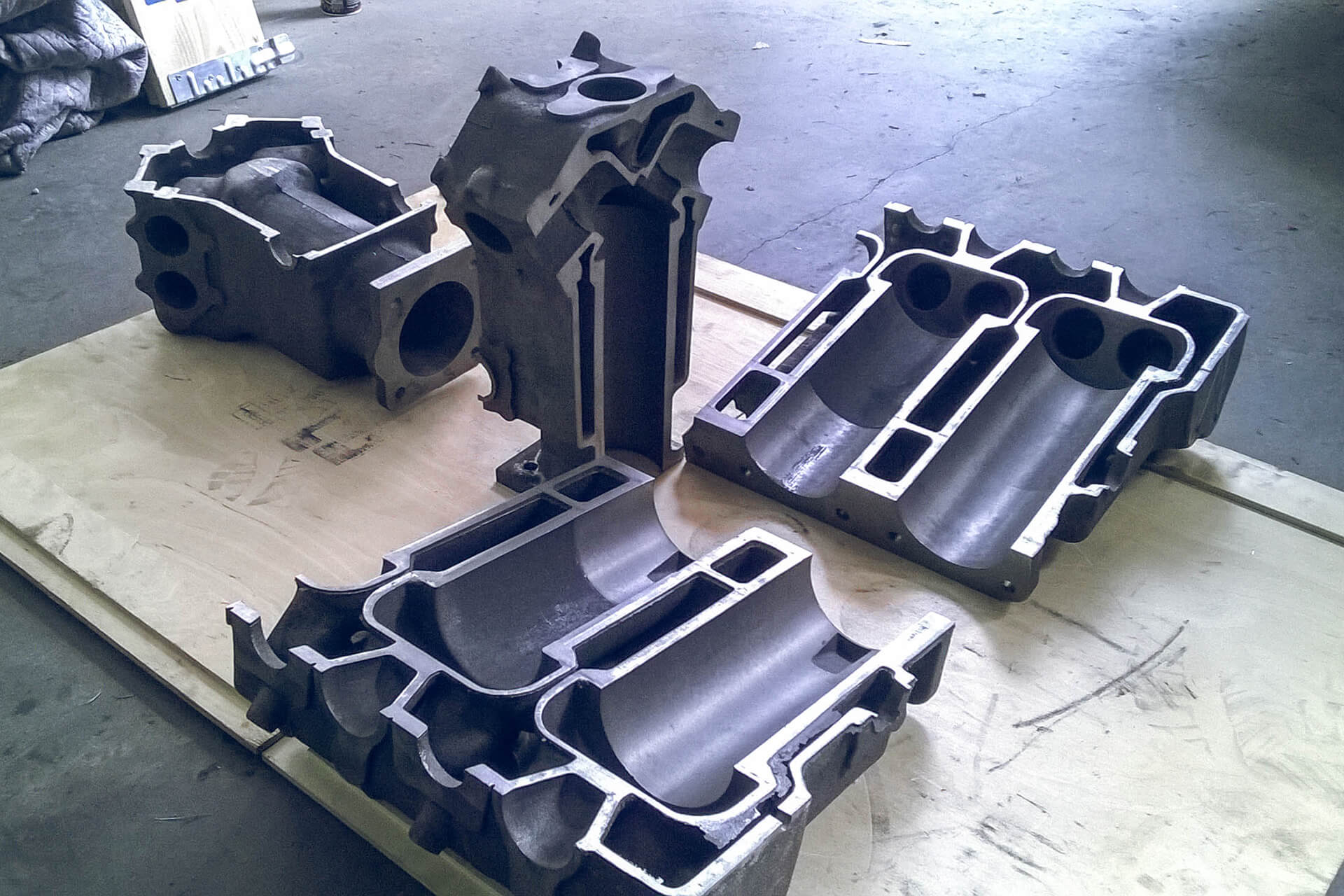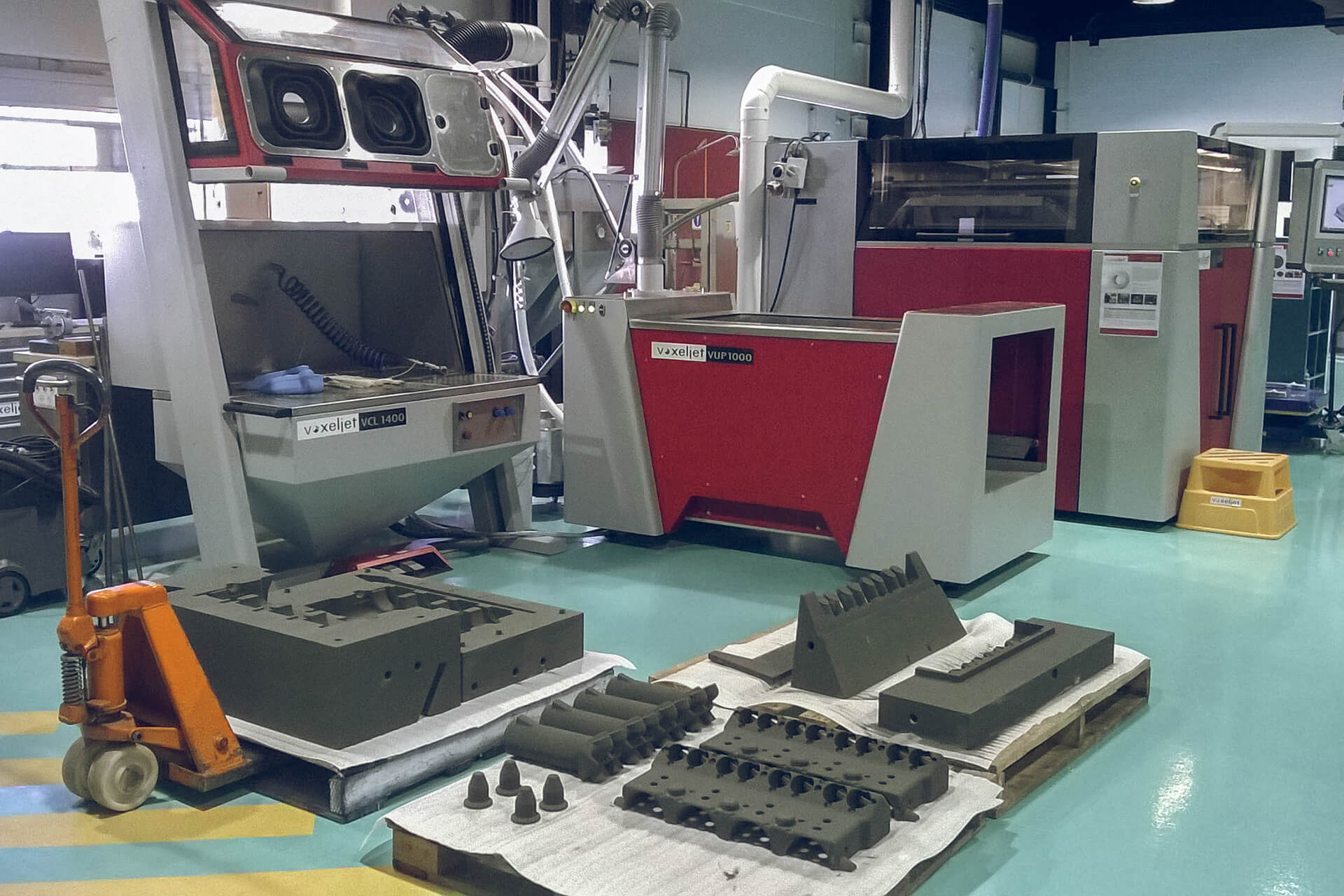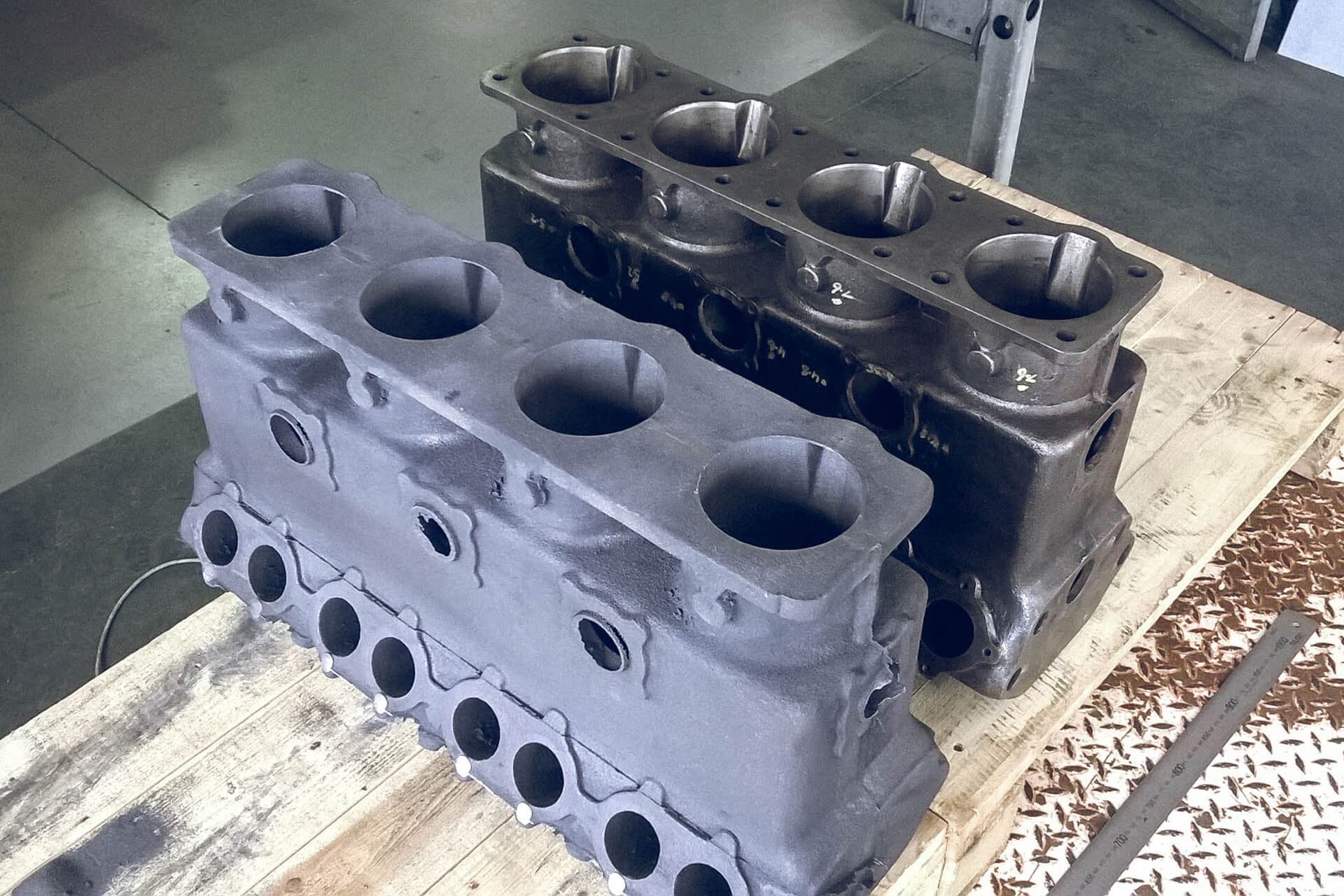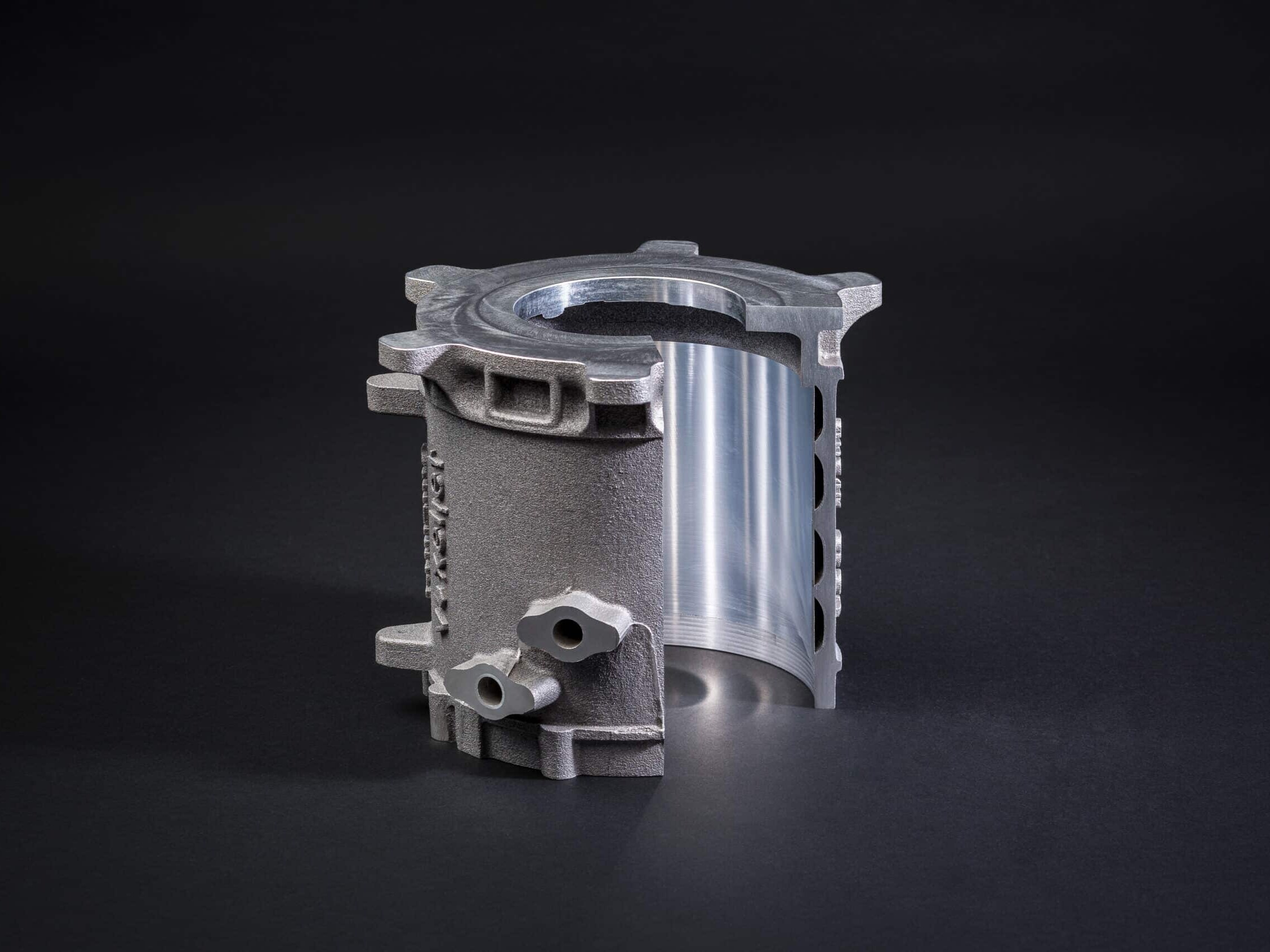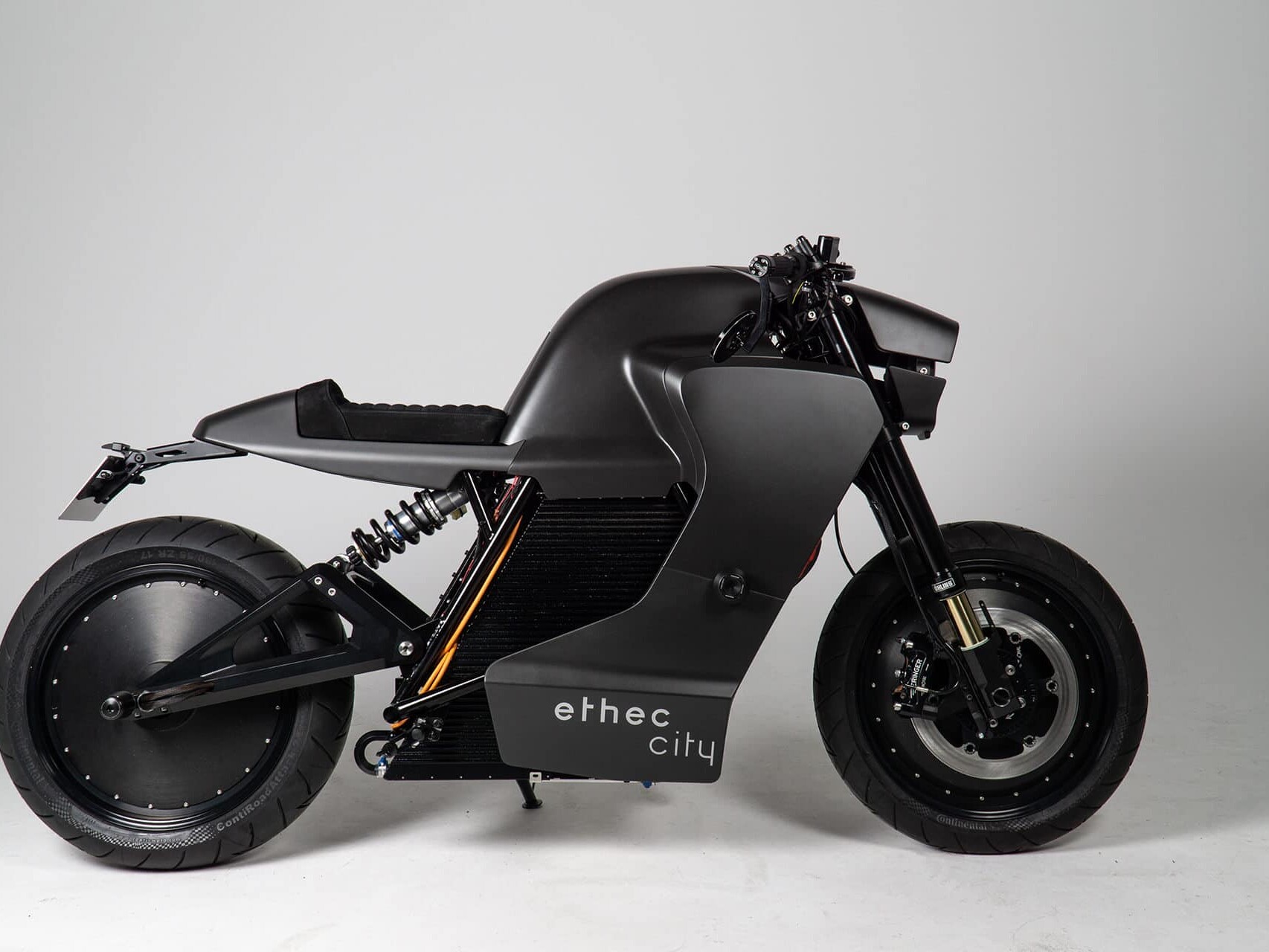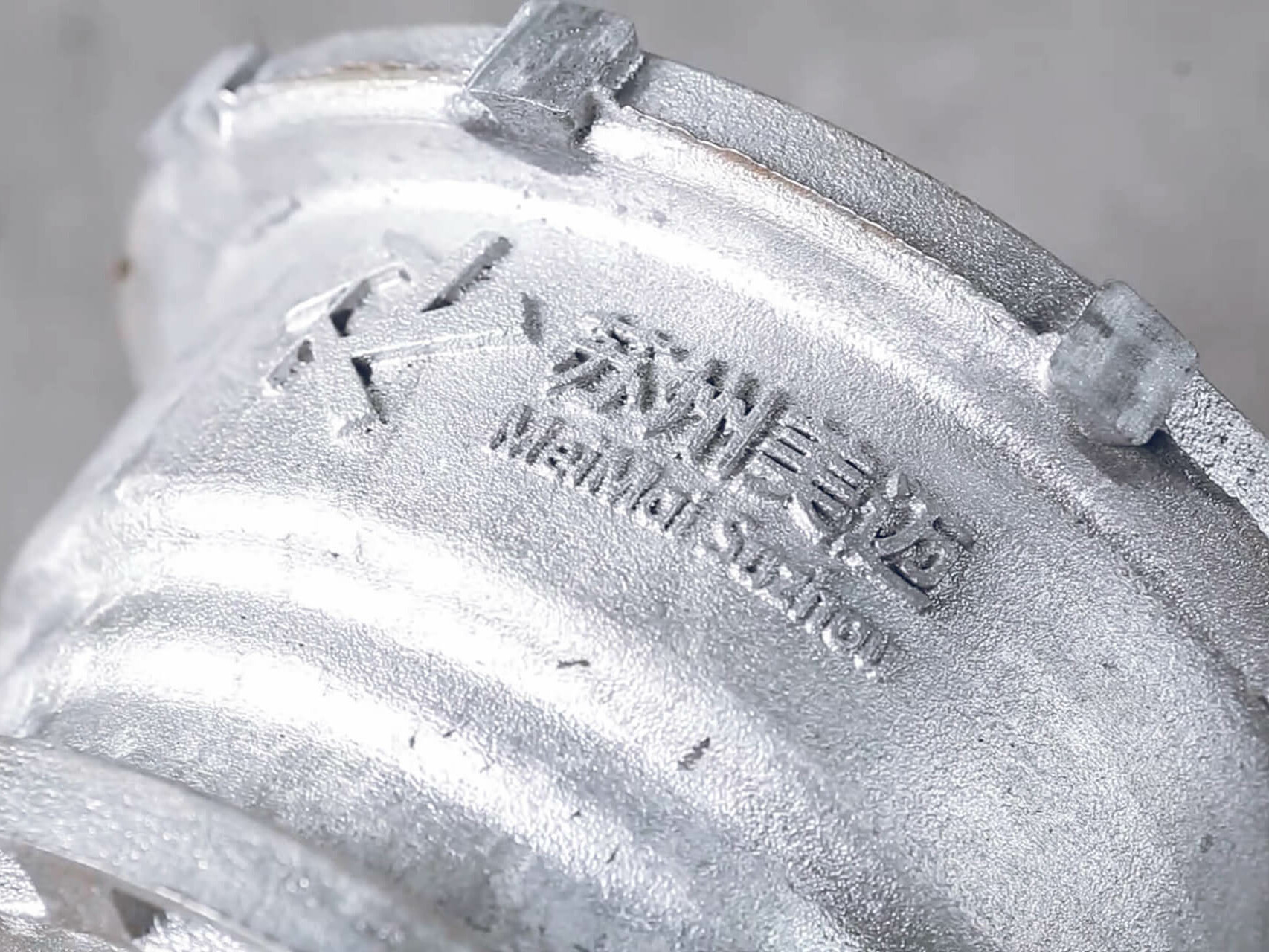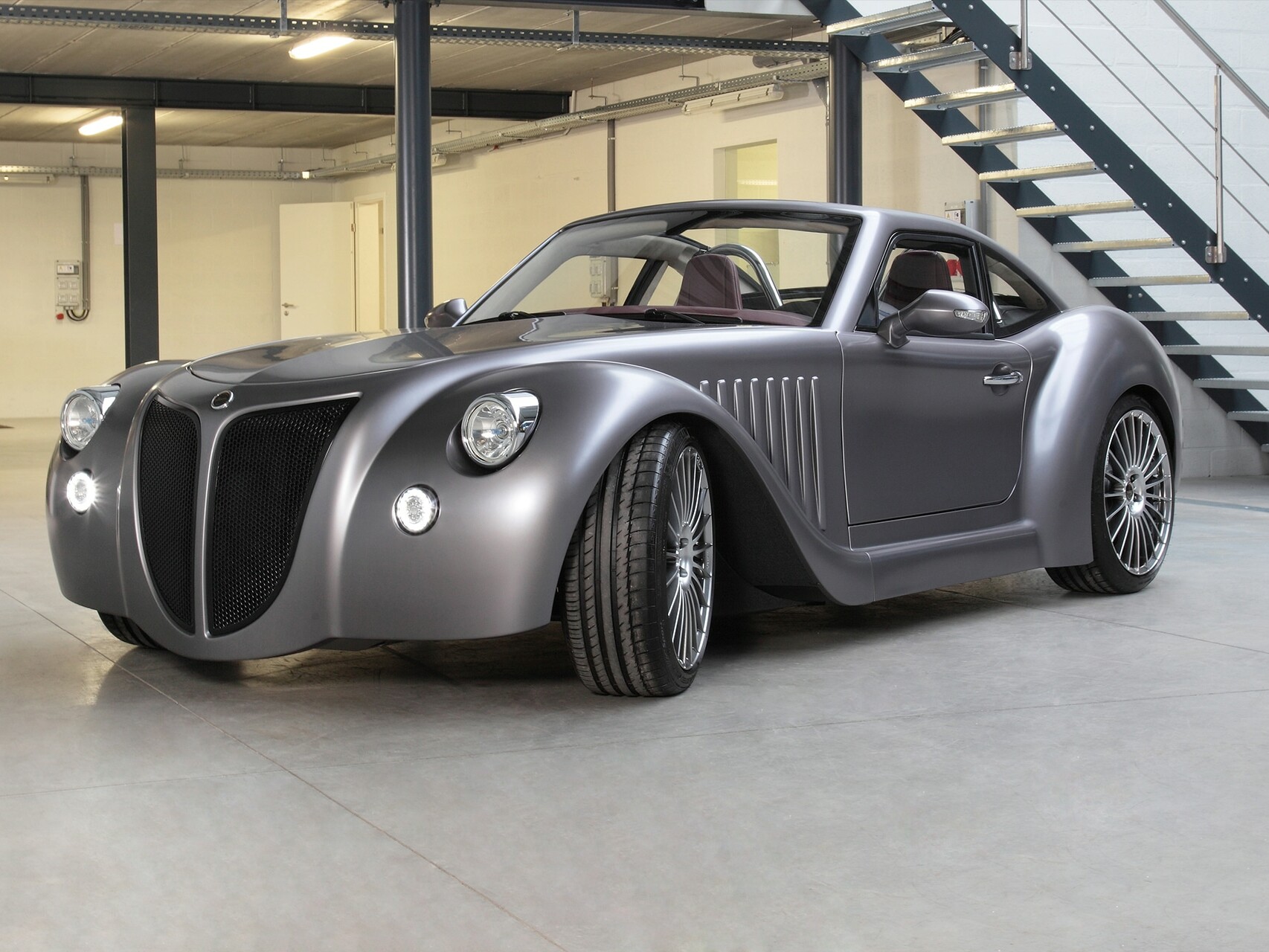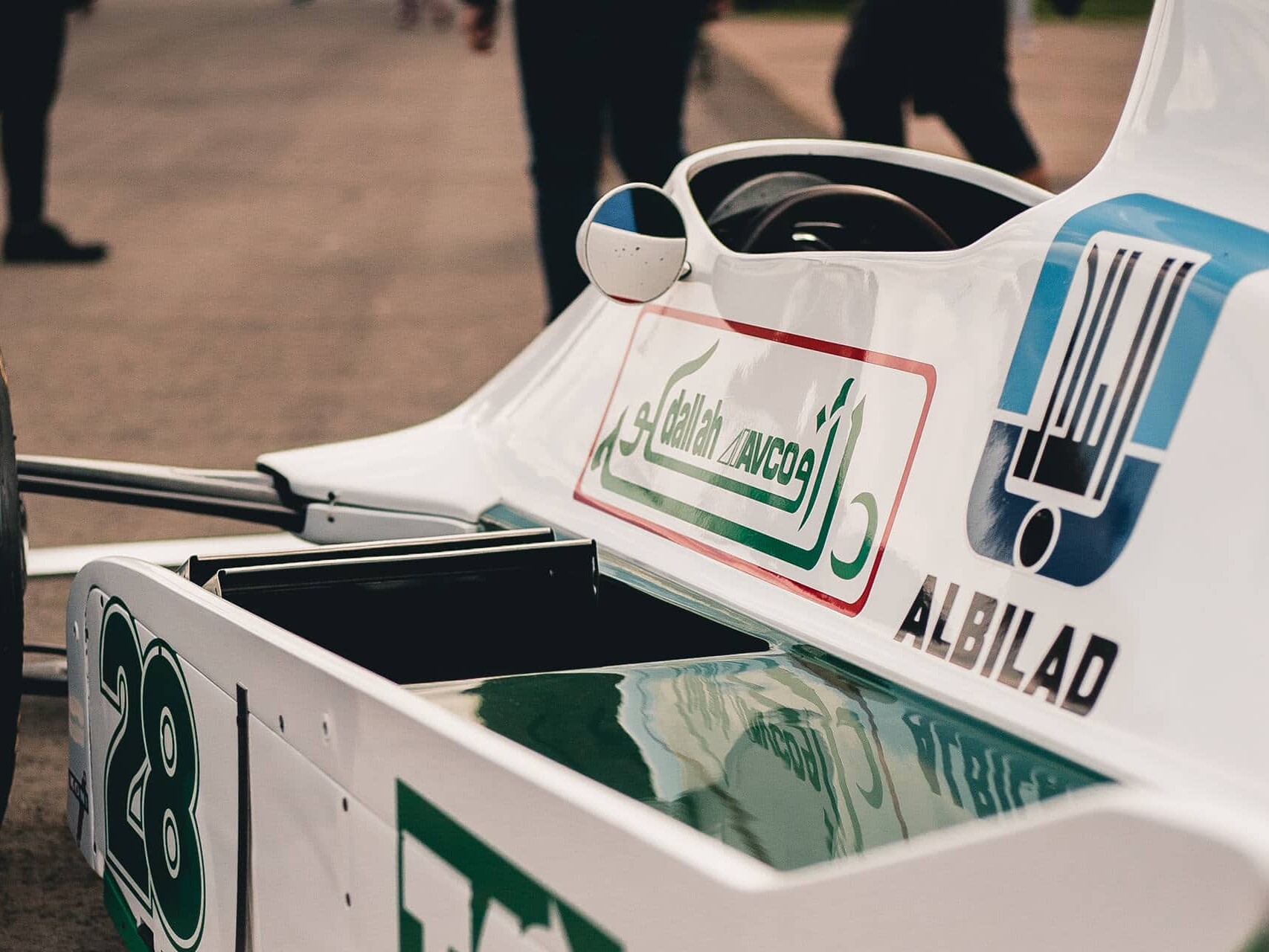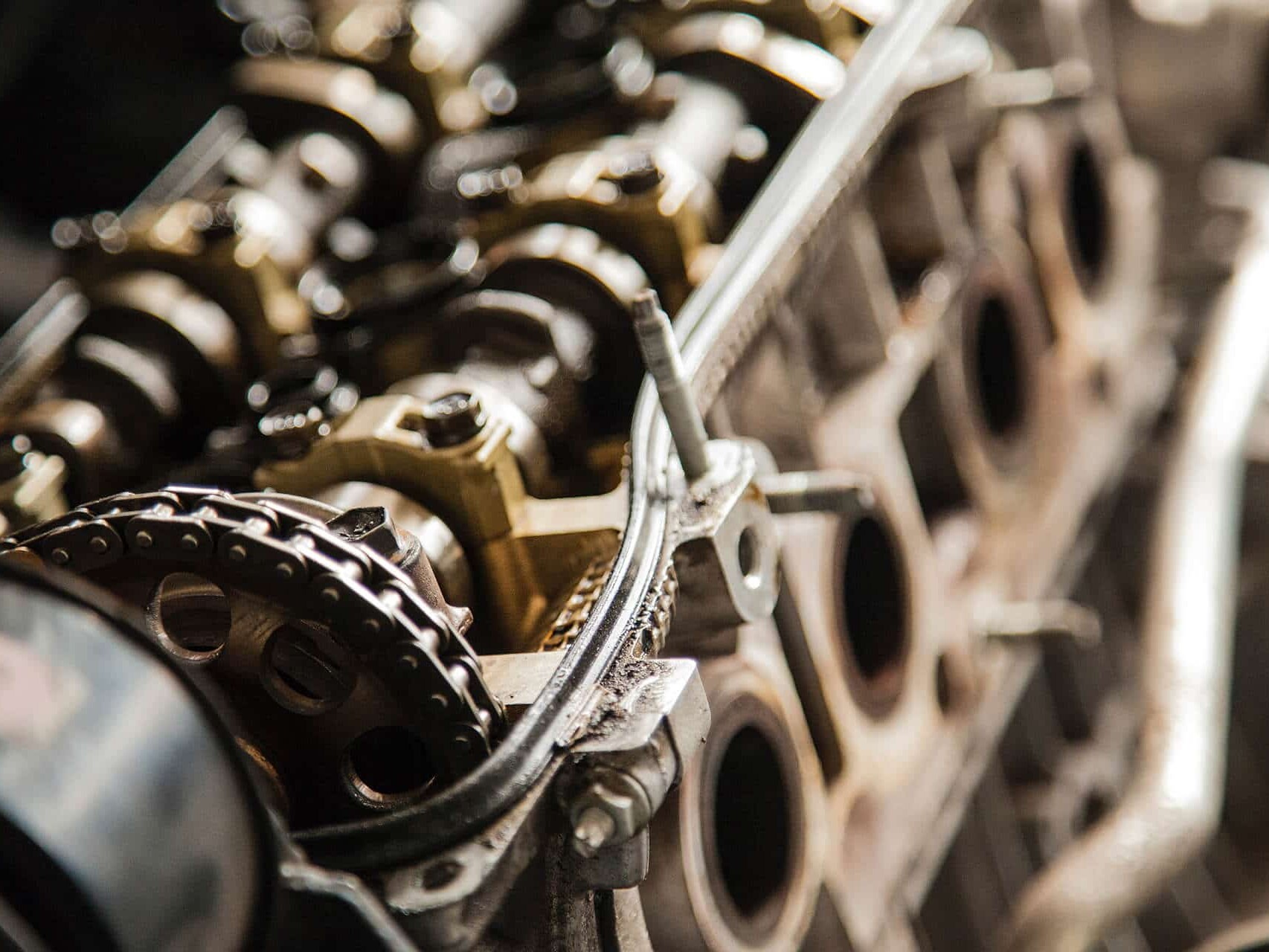- Home
- Case Studies
- Automotive
- Reverse engineering of a racing engine block
Reconstruction of a Delage racing engineusing voxeljet's 3D printing technology
The Binder Jetting technology keeps a classic car on the road. The Delage Type S, with its potent 4.5 liter four-cylinder engine, was one of the most significant race cars of its time. And the same can be said about its longevity. The four-cylinder engine lasted 100 years before irreparable engine damage brought about its end. Thanks to reverse engineering and voxeljet’s 3D printing, the legend is now getting a second lease on life.
Between 1905 and 1935, French car maker Delage built exclusive vehicles for wealthy customers all over the world. The company was also a leader in the motor sports world, and won a number of victories such as the French Grand Prix and Indianapolis, among others.
Today, rarities made by Delage such as the Type S, are considered priceless master works of automotive history. The vehicle, which is the only surviving example, took part in the 1914 French Grand Prix but after more than 100 years, the engine casting failed and was beyond repair. Only the production of a completely new engine casting offered a solution if the car was to keep running. The problem: After a hundred years, there are no spare parts, design drawings or even other engines to reference.

Damaged original engine as data basis
The complex project would never have gotten off the ground if it was not for the damaged engine that was used to obtain the required form and dimensional data. A team of Australian specialists, including experts at CSIRO Lab 22, was able to find a solution to the Problem.
We dissembled the defective engine and used scanning and CAD modelling to reconstruct the failed casting. With reverse engineering, we were able to generate all the required 3D data sets in a short time period. The re-manufacture of such a unique and exotic racing engine, would not be feasible without digital measurement, CAD modelling and 3D printing technology. This can now be done quickly and cost-effectively. Also, using sand 3D printing technology, the final part is an authentic reproduction of the original.
Phil Guilfoyle, Project Manager
Still, such a project requires a lot of know-how. The reconstruction of a complicated engine casting requires experienced engineers who have the necessary technical knowledge with regard to function, processing, casting ability, and machining of the new components. The CAD model that was generated was used to design a sand mold for printing, which was then validated by foundry engineers. The use of simulation tools finally provided a level of certainty regarding the casting process.
3D printing is the only economical alternative for the reconstruction process
Once all of the design data had been determined and casting characteristics such as contraction, metal flow and vents had been included, the sand cores were manufactured for subsequent casting. The traditional method of manufacture, using conventional core forming would have been slower, less accurate and far more expensive. The tool-less 3D printing of the sand molds was the only alternative in this context.
The entire CAD model was successfully limited to a total of 14 mold parts, compared to the original model which consisted of at least 42 components. As a precautionary measure, the decision was made to print a precise plastic model, so that the fitting accuracy of all components could be determined exactly in advance. The process that was used offered a high degree of resolution and perfect detail, which allowed for a final assessment and optimization of the test molds. Also, a trial sand mold was printed and a trial casting poured to check that all the engine detail, mold design and casting process details were as near to perfect as possible.
Now the entire sand core package was printed using the 3D printing system VX1000. The molds are created without expensive mold set-ups, and are produced in a fully automated process purely based on CAD data using the layer building method, which consists of the repeated application of 300 micrometer thick quartz sand layers that are selectively glued together with a binder using the print head of the system. After the printing process is complete, the molds only have to be unpacked and cleaned of excess sand. Since sand molds are created directly from the specified CAD data, they set the trend in terms of richness of detail and precision due to the high resolution of the printers.
The subsequent production casting procedure went exactly as planned, so that the components were easy to machine because of their quality and the precision of the sand molds. With this project, the Australian team and CSIRO specialists have given the racing legend Delage Type S another lease on life, which will hopefully take it through another century.
Reconstruction of a Delage racing engine using voxeljet 3D printing technology
Further Case Studies
3D printing for optimized electric motors
Aiona Cast has filed a patent application to significantly optimize electric motors. The company produced a prototype using 3D printing.
Printed Castings – Optimized housing lets E-Motorcycle Batteries live longer
By using innovative technologies such as 3D printing, the prototype could soon go into series production.
Electric motor housing from the 3D printer
voxeljet 3D printing technology for producing cast parts for electric-mobility
Engine optimization with 3D printing
Vehicle technology manufacturer Lütgemeier increases flexibility and productivity using the voxeljet VX1000 3D printing system in order to supply the high-performance car tuning company Brabus
3D Printing in Reverse Engineering
In the oldtimer sector, more and more spare parts are being manufactured without tools using modern measuring technology in combination with 3D printing.
3D printing and its applications for racing
3D printing provides racing with the ability to quickly complete innovation cycles.
3D Printing and Motor Manufacturing
Additive manufacturing shortens product time in engine construction and offers faster innovation cycles for individual motor components.
3D Printing Solutions
Would you like to learn more about voxeljet and 3D printing? Click here for the entire voxeljet solution portfolio.



















